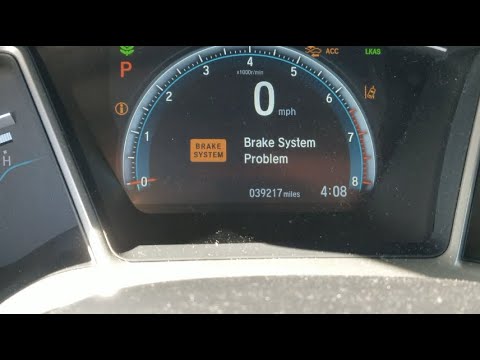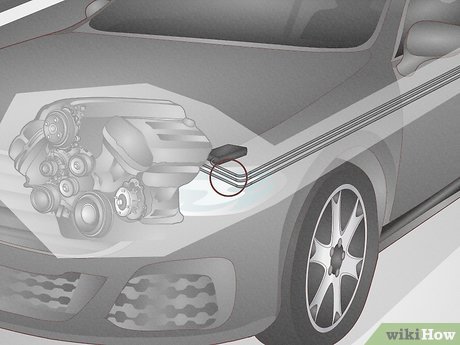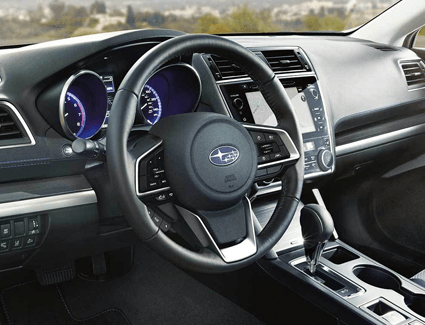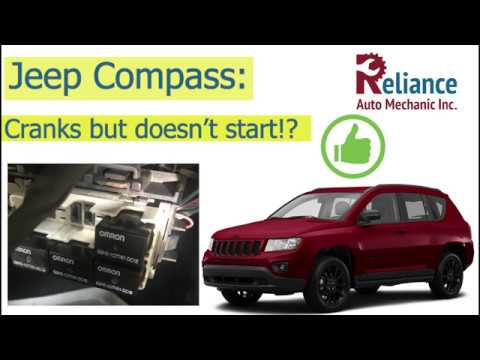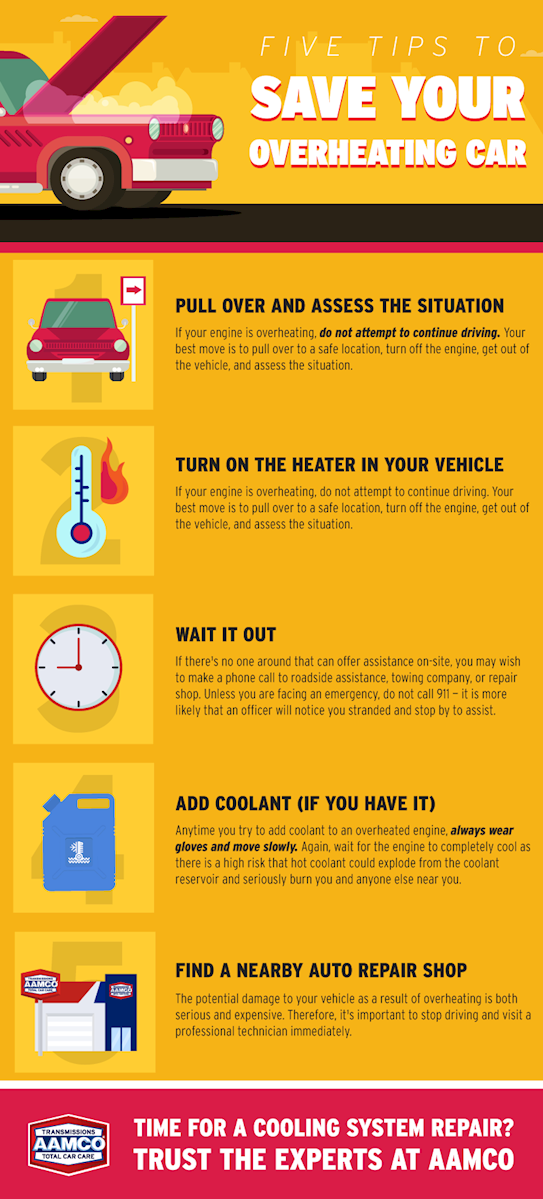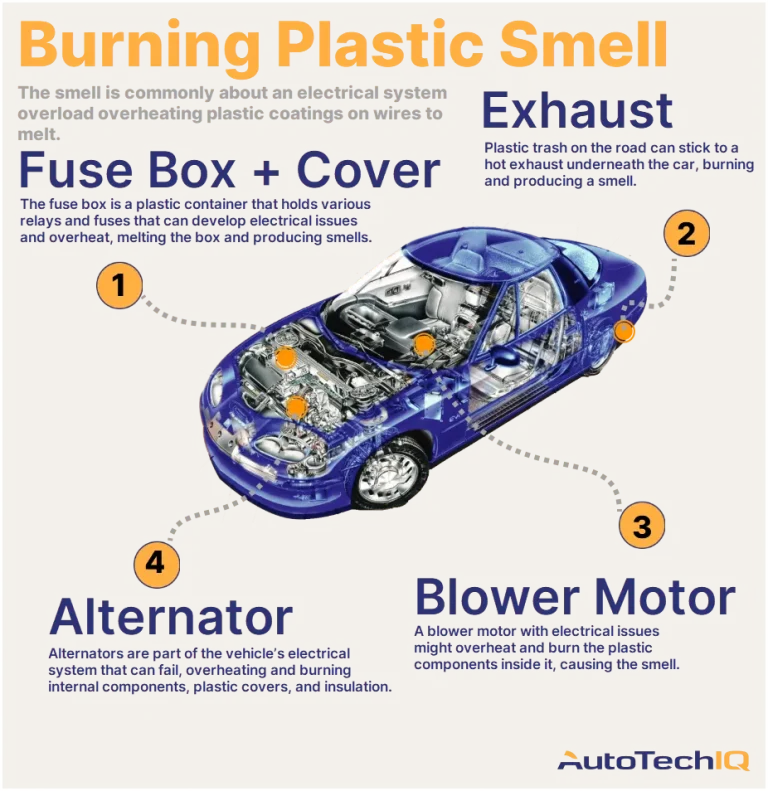Honda Civic Brake System Problem: Solving Safety Issues
A Honda Civic brake system problem typically involves low brake fluid, worn brake pads, or a faulty brake master cylinder. Warning lights may appear, and braking may feel spongy or weak. Immediate inspection and repair are essential to maintain safe stopping performance and avoid further damage to the braking system.
Many Honda Civic owners encounter brake-related issues that can turn a peaceful drive into a nerve-wracking experience. Whether it’s a strange noise when you press the pedal, a longer stopping distance, or a warning light that won’t turn off, these problems can be both frustrating and worrying.
You’re probably wondering what’s causing these issues and, more importantly, how to fix them. We’ll dive into the common brake system problems faced by Honda Civic owners and provide you with practical solutions to ensure your safety on the road. Keep reading to find out how to regain confidence in your car’s braking performance. Your journey to smoother, safer rides starts here.
Honda Civic Brake System Problem
Common Brake System Issues
Your Honda Civic’s brake system is crucial for your safety on the road. Yet, like any other car, it can develop issues over time. Knowing the common brake system problems can help you spot them early and avoid costly repairs. Let’s dive into the typical issues you might encounter.
1. Uneven Brake Pad Wear
Have you noticed your car pulling to one side when you brake? This could be due to uneven brake pad wear. It’s a common issue in many vehicles, including the Honda Civic. Uneven wear can occur if the calipers are malfunctioning or if there’s debris in the brake system.
Regular inspection of brake pads can prevent this problem. You can check them yourself or have a mechanic do it. Look for signs of wear and tear on your brake pads. If they are worn unevenly, consider replacing them.
2. Brake Fluid Leaks
Brake fluid is essential for the proper functioning of your brake system. If you notice a spongy brake pedal or reduced braking power, you might have a brake fluid leak. This could be dangerous, as low fluid levels can compromise your ability to stop effectively.
Check the ground where you park for any fluid stains. If you find a leak, it’s best to have your Civic examined by a professional. They can identify the source of the leak and repair it before it escalates.
3. Noisy Brakes
Squeaking or grinding noises when you brake are not just annoying; they can signal a problem. Such noises might indicate worn-out brake pads or shoes. Ignoring these sounds can lead to further damage and higher repair costs.
Listen to your brakes. If you hear unusual sounds, it’s time to take action. You can replace the brake pads yourself or visit a mechanic for a thorough check. Addressing this issue early can save you money and ensure your safety.
4. Brake Light Warning
The brake warning light on your dashboard is there for a reason. If it lights up, don’t ignore it. This light can indicate a variety of issues, from low brake fluid to a malfunctioning ABS system. It’s your car’s way of telling you something needs attention.
Keep an eye on your dashboard. If the brake light comes on, check your brake fluid levels first. If levels are fine, consider consulting a mechanic. They can diagnose the problem and help you get back on the road safely.
These common brake system issues are manageable if you act promptly. By being aware of these problems, you can ensure your Honda Civic remains a reliable and safe ride. Have you ever faced any of these brake issues with your Civic? How did you handle them? Your experiences might help others in similar situations.
Credit: www.civicx.com
Symptoms Of Brake Problems
Experiencing unusual noises or vibrations while braking in a Honda Civic can signal brake system issues. Increased stopping distances or a spongy brake pedal might also indicate problems. Addressing these symptoms promptly ensures safety and optimal vehicle performance.
When was the last time you thought about your Honda Civic’s brakes? Not often, right? But your brake system is vital to your safety. Understanding the symptoms of brake problems can save you from unexpected dangers and costly repairs. Whether you’re a seasoned driver or new to the road, keeping an eye out for these signs can make all the difference.
Read more: Honda Accord is Not Starting: Troubleshoot Now!
Unusual Noises
Have you noticed any strange noises when you apply the brakes? Grinding or squealing sounds are not normal. They often indicate worn-out brake pads or issues with the rotors. If you hear a high-pitched squeal, your brake pads might be telling you they’re nearing the end of their lifespan. Ignoring these sounds could lead to further damage and more expensive repairs.
Vibrations Or Pulsations
Does your steering wheel shake when you brake? This is more than just annoying. Vibrations can signal that your rotors might be warped. It’s a common issue in cars with frequent heavy braking. Imagine driving on a bumpy road, but it’s your car causing the bumps. Addressing this early can prevent additional wear on your brake system.
Brake Pedal Feels Soft Or Spongy
A soft brake pedal is a red flag. When you press down, it should feel firm and responsive. A spongy pedal might indicate air in the brake lines or a problem with the brake fluid. If your pedal goes to the floor, it’s crucial to get it checked immediately. Your brakes might not be providing the stopping power you need.
Read more: Honda Civic Won’t Start But Has Power: Troubleshoot Now!
Warning Light Is On
Is your brake warning light glowing on your dashboard? It’s easy to overlook, but it’s there for a reason. This light could be highlighting low brake fluid or a malfunction in the system. It’s like your car’s way of waving a red flag. Instead of ignoring it, take it as a cue to investigate further.
Pulling To One Side
Does your car veer to one side when you brake? This symptom can be unsettling. It might mean uneven wear on your brake pads or issues with the brake calipers. Imagine the surprise of needing to correct your steering every time you stop. Ensuring your brakes apply evenly will keep your car stable and safe. Recognizing these symptoms can prevent bigger issues down the road. Think about your experiences—have you ever felt unsure about your brakes? Take action before it’s too late. Checking your brake system regularly can not only save you money but also keep you safe. What will you do the next time you notice something off with your brakes?
Diagnostic Methods
The Honda Civic is known for its reliability. But brake system issues can arise. Diagnosing these problems is crucial. Proper diagnostics ensure safety and performance. Let’s explore effective diagnostic methods.
Visual Inspection Of Brake Components
A visual inspection is the first step. Check brake pads for wear. Inspect rotors for damage or warping. Look at brake fluid levels. Examine brake lines for leaks or cracks. This method is simple yet vital.
Brake System Testing With Diagnostic Tools
Use diagnostic tools for precision. OBD-II scanners are useful. They identify error codes linked to brakes. These codes reveal specific issues. This method saves time and ensures accuracy.
Listening For Unusual Noises
Listen for squealing or grinding noises. These sounds signal worn brake pads. They may also indicate rotor damage. Sound diagnosis is a practical method. It helps pinpoint the problem early.
Checking Brake Pedal Feel
Monitor the brake pedal feel. A soft pedal indicates air in the system. A hard pedal may suggest a blockage. Pedal feel provides valuable clues. It guides further diagnostics.
Performing Test Drives
Conduct test drives to assess braking. Observe if the car pulls to one side. This indicates uneven brake wear. Test drives reveal real-world performance. They are essential in diagnostics.

Credit: www.youtube.com
Effective Repair Solutions
The Honda Civic is a reliable car, but brake issues can occur. Effective repair solutions are important for ensuring safety and performance. Addressing brake problems early can prevent bigger issues later. Here are some effective repair solutions for Honda Civic brake problems.
Diagnosing The Brake Problem
Start by identifying the exact brake issue. Listen for unusual noises. Feel for vibrations when braking. Check for a soft or spongy brake pedal. Early diagnosis can save time and money. Always prioritize safety during this process.
Replacing Brake Pads
Worn brake pads can cause noise and reduced braking power. Replacing them is a common solution. Use quality brake pads for the best results. Follow the manufacturer’s guidelines for installation. This ensures optimal performance and safety.
Inspecting Brake Rotors
Brake rotors may wear unevenly over time. Inspect them for warping or grooves. Resurfacing or replacing rotors can improve braking efficiency. This step can also eliminate unwanted noises. Ensure rotors are in good condition for a smooth ride.
Checking Brake Fluid Levels
Low brake fluid can affect braking performance. Check fluid levels regularly. Top off with the correct type of brake fluid. Ensure there are no leaks in the system. Proper fluid levels maintain brake responsiveness.
Adjusting Brake Calipers
Misaligned brake calipers can cause uneven wear. Adjust or replace them if necessary. Proper alignment ensures even pressure on brake pads. This can extend the life of your braking system.
Bleeding The Brake Lines
Air in the brake lines can lead to a soft pedal. Bleed the lines to remove trapped air. This process improves brake responsiveness. Ensure no air remains in the system for safety.
Consulting A Professional Mechanic
Some brake issues may require expert help. Consulting a professional mechanic is wise. They have the tools and experience for complex repairs. A mechanic can ensure brakes are fully functional.
Preventive Maintenance Tips
Maintaining a Honda Civic’s brake system is crucial for safety. Regular checks and timely care prevent unexpected issues. A well-maintained brake system ensures smooth driving and peace of mind.
Check Brake Fluid Levels Regularly
Inspect brake fluid levels every month. Low fluid can indicate a leak. Ensure the fluid is at the right level to avoid brake failure.
Inspect Brake Pads For Wear
Check brake pads every 10,000 miles. Worn pads reduce braking efficiency. Replace them if they are thin or uneven.
Listen For Unusual Noises
Pay attention to screeching or grinding sounds. These sounds indicate worn pads or rotor issues. Address them promptly to ensure safe braking.
Examine Brake Rotors
Inspect rotors for grooves or warping. Smooth, even rotors ensure effective stopping. Replace damaged rotors to maintain performance.
Test Brake Pedal Responsiveness
Check pedal feel during driving. A spongy pedal may indicate air in the lines. Ensure the pedal is firm for reliable braking.
Schedule Regular Professional Inspections
Have brakes inspected by a professional annually. Experts can spot hidden problems. Regular inspections enhance brake system longevity.

Credit: www.seatcoversolutions.com
Frequently Asked Questions
What Are Common Brake Issues In Honda Civic?
Honda Civic brakes may experience squeaking, spongy pedal, or delayed stopping. Regular maintenance helps prevent these problems.
How Do I Know My Brake Pads Are Worn?
Listen for squeaking or grinding noises. Check for vibration when braking. Inspect for thin brake pads.
Why Does My Honda Civic Brake Pedal Feel Soft?
Air or moisture in brake lines can cause softness. Low brake fluid is another reason. Check immediately.
What Causes Honda Civic Brakes To Squeak?
Brake dust, moisture, or worn pads often cause squeaking. Cleaning or replacing parts usually solves the issue.
How Often Should Honda Civic Brakes Be Serviced?
Service brakes every 20,000 miles. Check during regular maintenance. Replace parts as needed for safety.
- Common Issues: Low brake fluid, worn brake pads, or faulty ABS sensors can trigger the brake system warning in a Honda Civic.
- Warning Signs: Look for a brake warning light, spongy pedal feel, or unusual noises when braking.
- Immediate Action Needed: Prompt inspection is crucial to ensure safe driving and prevent further damage.
Conclusion
Understanding brake problems in your Honda Civic is crucial. Regular checks help ensure safety. Addressing issues early can prevent costly repairs. Listen for unusual sounds and notice any changes in brake feel. Simple maintenance can keep your Civic running smoothly.
Consult a professional if problems persist. They offer expert advice and solutions. Keeping your brakes in good condition supports safe driving. Prioritize your car’s health for peace of mind on the road. Stay informed and proactive. Your Honda Civic deserves the best care possible.
Drive confidently with well-maintained brakes.

